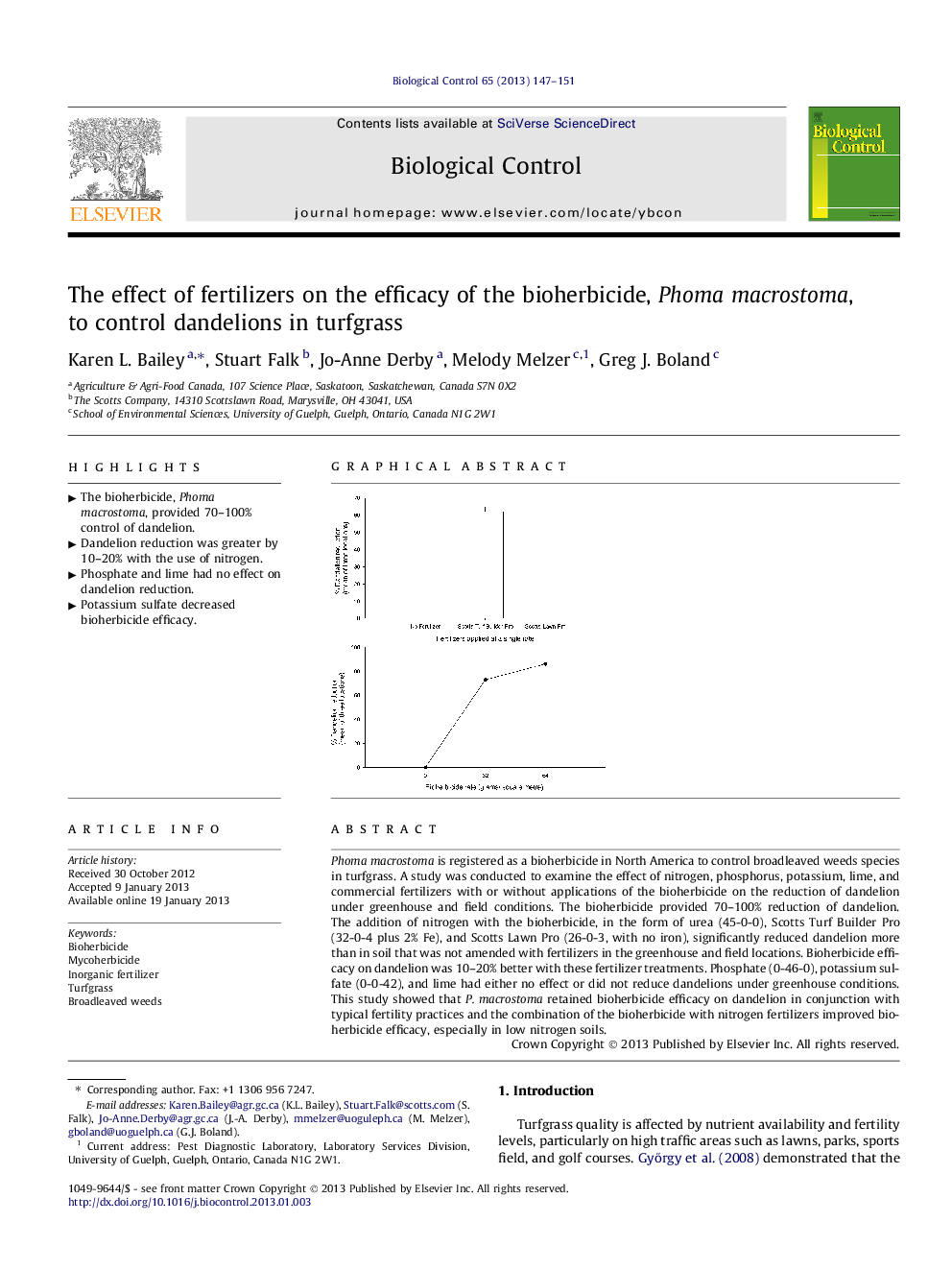| Article ID | Journal | Published Year | Pages | File Type |
|---|---|---|---|---|
| 6372870 | Biological Control | 2013 | 5 Pages |
Phoma macrostoma is registered as a bioherbicide in North America to control broadleaved weeds species in turfgrass. A study was conducted to examine the effect of nitrogen, phosphorus, potassium, lime, and commercial fertilizers with or without applications of the bioherbicide on the reduction of dandelion under greenhouse and field conditions. The bioherbicide provided 70-100% reduction of dandelion. The addition of nitrogen with the bioherbicide, in the form of urea (45-0-0), Scotts Turf Builder Pro (32-0-4 plus 2% Fe), and Scotts Lawn Pro (26-0-3, with no iron), significantly reduced dandelion more than in soil that was not amended with fertilizers in the greenhouse and field locations. Bioherbicide efficacy on dandelion was 10-20% better with these fertilizer treatments. Phosphate (0-46-0), potassium sulfate (0-0-42), and lime had either no effect or did not reduce dandelions under greenhouse conditions. This study showed that P. macrostoma retained bioherbicide efficacy on dandelion in conjunction with typical fertility practices and the combination of the bioherbicide with nitrogen fertilizers improved bioherbicide efficacy, especially in low nitrogen soils.
Graphical abstractDownload full-size imageHighlights⺠The bioherbicide, Phoma macrostoma, provided 70-100% control of dandelion. ⺠Dandelion reduction was greater by 10-20% with the use of nitrogen. ⺠Phosphate and lime had no effect on dandelion reduction. ⺠Potassium sulfate decreased bioherbicide efficacy.
